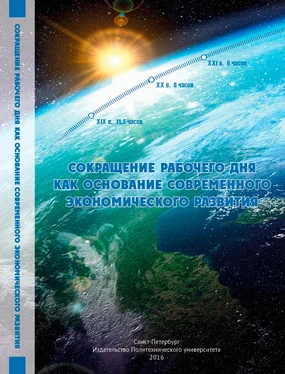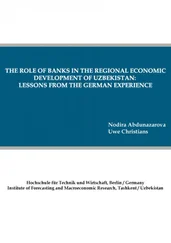The noted tendency had a limited modification. It was resisted by the tendency for monopolization of saved labour by free citizens while a part of this saving was appropriated by a growing group of lumpen-proletarians, without turning into actual free time as time for development of human abilities. This ratio of the noted tendencies led to the crisis of the slave-owning economy.
In conditions of feudalism unequal distribution of working and free time between opposite classes was reproduced. Agricultural labour, as a dominating form of productive labour, was fixed in serfs. Administrative labour, military service, etc., were fulfilled by the feudal class.
At the same time, serfs, unlike slaves, were not fully alienated from free time. In the period of religious holidays, for example, working was prohibited. Home ownership also gave an opportunity to dispose of time at discretion not only for work. Within joint labour of members of peasant’s family the head of a family fulfilled administrative functions. Accordingly, day’s rate of a peasant’s free time – more over the annual rate – was above zero.
Transition from corvée to the rent-system and from the rent-system to the money-rent enlarged peasants’ possibilities to dispose of themselves what assisted in increasing in their free time and, consequently, in economic development under feudalism. Despite this, opposition of main classes of the feudal society, concerning distribution of working and free time, was reproduced.
Thus, predominance of manual work sets insuperable limits on the way of economic development, in the end.
With establishment of domination of large-scale machine industry, increasing in free time of the society has been going on the basis of limitless increasing in social labour productivity what opens an opportunity for predominance of volumes of free time of the society over its working time at increasing in the social product, including calculations per capita. In such conditions an objective need for increasing in expenditures of social labour for increasing in a volume of produced benefits and scales of saved labour making the substance of free time of the society falls away. Consequently, social economic fixation of the majority of members of the society in productive labour and monopolization of the main part of free time of the society by the privileged minority get excessive, division of labour of this kind begins slowing economic development down.
In conditions of growing predominance of volumes of free time over a volume of working time a possibility of equal distribution of working and free time between able-bodied members of the society is formed. It means that an individual rate of free time of each able-bodied person will exceed one. Because of disabled people or people with reduced working capacity a typical individual rate must be lower than a social rate, but this deviation is not connected to essential social economic inequality in appropriation of conditions for everyone’s development.
Accordingly, the contradiction, resolution of which ensures economic development, is modified. Its positive tendency is in approaching equality of individual rates of free time of each person within predominance of free time over working time. The negative tendency is connected to distribution of labour saving, originated in the period of predominance of manual work, in favor of social groups socially and economically fixed in nonproductive activities.
It is obvious that the first tendency supposes participation of ever wider groups of able-bodied people in production labour. Speaking in Keynes’ words, “we shall endeavour to spread the bread thin on the butter to make what work there is still to be done to be as widely shared as possible” [19]. This enlargement assists to increasing in an individual rate of free time of people occupied in productive labour and possibilities ensured by increasing in social labour productivity. The increasing part of free time of the society is appropriated by those who fulfil production labour (though in decreasing volumes). Accordingly, the rate of growth of an individual rate of free time of members of this social group is higher than the rate of growth of a rate of free time of the society. As a result, the services sphere increasingly heads for needs of development of the majority of members of the society, people occupied in this sphere begin combining their labour with production labour.
In conditions of a relative increase in free time of the society the negative tendency of economic development consists in conserving an individual rate of free time of immediate producers at the level below 1 and in utilization of labour saving to increase the amount of groups occupied in nonproduction activities. Then people, occupied in productive labour, get a decreasing part of free time of the society and their individual rate of free time, remaining below 1, keeps similar to such a rate of immediate producers of the epoch of manual work – slaves and serfs. Needs of the privileged minority remain a priority for the nonproduction sphere, in this sphere fixation of considerable groups of employees in fulfilling unattractive labour is reproduced what prevents from their own development.
It is necessary to notice that keeping essential inequality between members of the society, depending on their occupation in the production or nonproduction spheres, may be not reflected in the level of their incomes. Consequently, equality of incomes is not a sufficient ground for the conclusion about equality of conditions for development of members of the society. That is why in the analysis of economic development it is necessary to pay primary attention to researching the dynamics of working and free time.
It is obvious that during economic development both positive and negative tendencies become apparent. The way they relate in practice demands special researching.
1.2. Decreasing in the General Working Time Fund at Increasing in the Output Volume as One of Appearances of Labour Productivity Growth
Growth of social labour productivity in conditions of predominance of large-scale machine industry is determined by potential of scientific advances that is limitless by its nature. It makes a prerequisite for increasing in the social product at reduction of general expenditures of working time.
To understand laws of economic development it is necessary to analyze the experience of countries leading in STP (scientific and technological progress) because exactly these countries show prospects of movement of the world economy as a whole.
Today 15-16% of world’s inhabitants live on the territory of developed countries, but they produce ¾ of the gross world product and create 90% of the whole high-tech production of the world. These countries distinguish themselves with a high level of inhabitants’ life.
Expenditures of labour in industry, as a dominating sector of the production sphere, play the determining role in the dynamics of the social working time fund of these countries. For example, according to the data of the research of the McKinsey Global Institute, the share of the industrial sphere is about 70% of the export of large developed countries and about 90% of costs of private companies for R&D (research and development). At that, contribution of industry to growth of social labour productivity is more than twice as high the part of inhabitants occupied in this sector [20].
Manufacturing industries with a relatively small part of “primary industries” – agriculture and extractive industry – prevail in the production sphere of these countries. In all the examined countries increasing in the specific weight of occupation in agriculture, extractive industry and manufacturing industry was observed. For example, in 1993 the level of occupation in agriculture was on average 5.6% and in 2009 it was 3.3%. This index in extracting industry decreased thus that it was less than 1% in all the countries both in 1993 and 2009. Occupation in power engineering fluctuated around 1% of all workers in 1993, and it decreased mainly by 2009. If in 1993 the level of occupation in manufacturing industries fluctuated from 14% in the USA to 24.6% in Korea, then in 2009 it fluctuated from 8.9% in the USA to 19.3% in Italy. Only a part of employees occupied in building grew insignificantly having reached on average 6-7% in 2009.
Читать дальше












